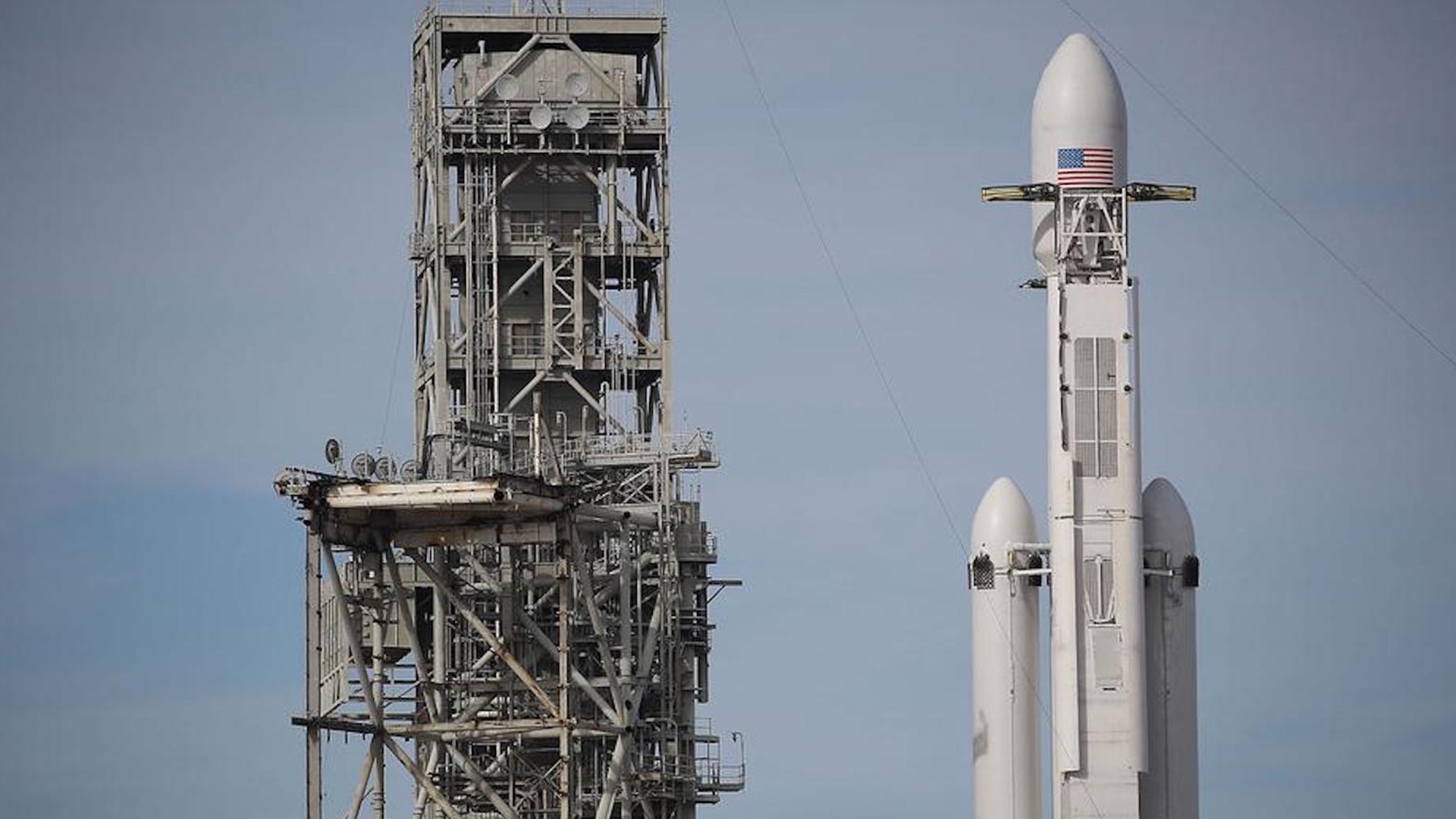SpaceX’s newest rocket, the Falcon Heavy, is the most powerful Elon Musk has ever sent into space. But it’s got nothing on NASA’s Saturn V, which sent the first humans to the moon during the Cold War era.The Falcon Heavy is set to launch from Cape Canaveral, Florida, on Tuesday afternoon. It’s the most powerful rocket in the world right now. But in 1969, NASA launched a bigger and more powerful one: the Saturn V, which sent three astronauts to the surface of the moon for the first time. Still, the reusable SpaceX rocket will cost a fraction of the cost of its predecessor to build.Musk’s new rocket will launch with only a single, cherry-red Tesla Roadster — Musk’s own, in fact — carrying a mannequin in a spacesuit. But the new rocket is capable of sending 57 metric tons into low-earth orbit — the equivalent of about four school buses; the Saturn V could launch 130 metric tons, or 10 buses. Between its inaugural mission and 1972, the Saturn V also sent 12 astronauts into space.The Saturn V, which topped out at 363 feet, was physically bigger than the Falcon Heavy too. Musk’s rocket stands at just 230 feet.Despite their differences, the Falcon Heavy will launch from the same pad where the Saturn V lifted off 49 years ago. NASA is now leasing the pad to SpaceX.
Advertisement
The Falcon Heavy's goal is to send the car into orbit around the sun, about the same distance as the sun is from as Mars. Musk thinks — hopes, perhaps— that it might even land on Mars. There’s only an “extremely tiny” chance of that happening though, he told the New York Times.Still, the dummy cargo for the Falcon Heavy’s maiden launch weighs a bit more than the one strapped to SpaceX’s first Dragon cargo capsule, which carried a single wheel of cheese into space in 2010.But even if the Falcon Heavy isn’t quite as powerful or large as Saturn V, it’s still impressive. Musk’s new rocket is largely reusable, while the Saturn V’s rockets were single-use. They returned only the tiny command module, along with its occupants, back to Earth.SpaceX hopes to recover all three of the boosters, which strapped together make up the Falcon Heavy. The two side boosters will try to land back on launchpads at Cape Canaveral. The middle booster will attempt a landing on an unmanned float in the Atlantic.Correction 2/6/19 1:48 p.m.: An earlier version of this post incorrectly stated that four astronauts went to the moon in 1969. Three did.
